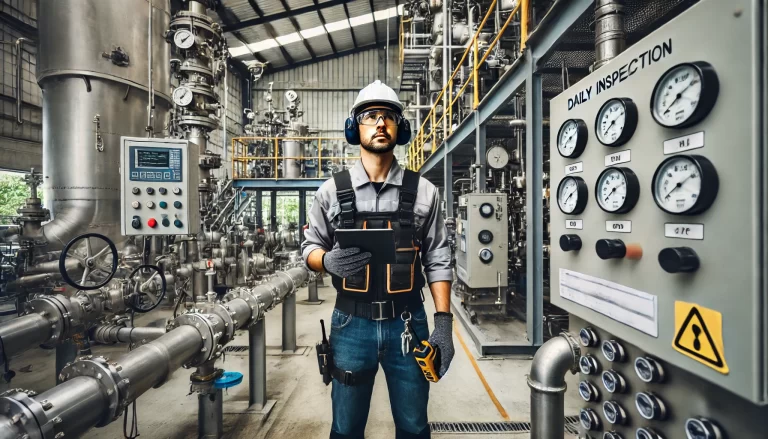Responsibilities of Construction Personnel
Summary:
After the completion of the project, conduct a technical and quality summary.Work Instructions:
Attend the design review and technical handover meetings.
Under the project manager’s direction, provide technical handovers to construction personnel.
Execution:
Strictly follow the construction and acceptance standards.
Ensure the inspection system is followed.
Adhere to the process handover system.
Guidance and Participation:
Provide technical guidance for solving construction-related problems and day-to-day management tasks.
Guide the QC team’s activities.
Participate in the preparation of construction budgets.
Take part in the quality inspection process of specialized projects.
Preparation:
Prepare the construction technical plan.
Organize and prepare the completion documents and quality evaluations for subprojects and individual works.
Draft the material requisition forms.
Prepare task orders (weekly, monthly, and other time frames).
Prepare hazard identification and JHA (Job Hazard Analysis) forms.
The general technical management of on-site instrumentation construction includes familiarization with construction drawings, technical documents, installation specifications, equipment management, material handling, process coordination, and commissioning.

1. Familiarization with Construction Drawings, Technical Documentation, and Installation Standards
Before construction begins, it is essential to fully understand the design drawings and related equipment installation documentation. This allows us to identify any defects or errors in the design early on, preventing costly changes or delays during the construction phase.
For example:
If high-temperature sensors are improperly installed, they could be damaged or show inaccurate measurements.
If the grounding or power supply system is not designed properly, it may cause signal interference and unstable communication.
These issues can only be resolved by replacing instruments or redesigning the system, which significantly increases costs and time. Thus, thoroughly reviewing the design documentation before construction is vital to avoiding these problems.
Key steps include:
Confirming Equipment Quantities.
Verifying Instrument Selection and Installation Methods: Refer to industry standards (such as HG/T20507-2000 and HG/T21581-95) for instrument selection and installation methods, especially when dealing with special instruments in high-temperature, high-pressure, or viscous media.
Checking Valve Failures and Control Systems: Ensure that valve failure modes align with the process requirements to ensure the system can return to a safe state in case of failure.
Evaluating the Grounding and Power Systems: Verify that the design complies with national standards (e.g., HG/T20513-2000, HG/T20509-2000) to avoid system interference.

2. Management of Instrumentation Equipment and Construction Materials
Successful construction relies heavily on managing materials and equipment. Common issues include:
Missing or incorrect materials.
Over-purchasing, leading to material waste.
Discrepancies between contract specifications and delivered equipment, such as mismatched flanges or non-compliant gaskets.
Effective material management includes:
Establishing a Dedicated Storage Area: Materials should be stored in a controlled environment with a detailed inventory system.
Inspecting Deliveries: Upon arrival, materials should be checked against the design drawings to ensure correct quantity, specification, and quality.
Organizing Materials by Installation Type: Group materials for each installation type to ensure the correct components are available when needed.
Quality Inspection of Instrument Cables: Check cables for insulation, resistance, and length compliance with national standards.

3. Construction Process Management and Cross-Disciplinary Coordination
On-site construction management directly impacts whether the project can be completed on time and within budget. Proper management includes scheduling, resource allocation, and adhering to construction norms.
Key guidelines include:
Initiating Work: Instrumentation personnel should begin work once approximately 70% of the piping is complete.
Marking Installation Points: Work with the piping team to mark exact locations for instrument installations on the pipes.
Coordinating with Piping Teams: Ensure that instruments are installed only after piping systems are cleared and tested.
Clear Communication: Ensure construction personnel fully understand the design drawings and national standards, particularly for complex installations.
During construction, continuous supervision, frequent checks, and strict adherence to technical standards are essential.

4. Commissioning and Testing
Pre-Installation Calibration: Calibration of instruments should be done prior to installation, with a calibration record provided.
Inspection of Control Loops: Ensure random checks of system circuits are performed according to the standards, with no less than the required sampling rate.
Verification of Grounding Systems: Carefully inspect the grounding system to detect any interference.
Special Instrumentation Attention: Instruments such as vortex flow meters, electromagnetic flow meters, and radar level meters should receive particular attention during system testing, as any installation issues will surface during commissioning.
Powering the System: System power should only be turned on once confirmed by at least two professionals. The sequence should start from the main power source, followed by secondary power sources, and lastly the instrument loops.

Conclusion
Instrumentation construction management is a detailed and meticulous task that requires ongoing learning and experience. Effective management ensures that design issues are addressed before construction, reduces investment, and avoids unnecessary delays. It is essential to always rely on what is seen and personally handled in the construction process, as the responsibility ultimately lies with the management.
